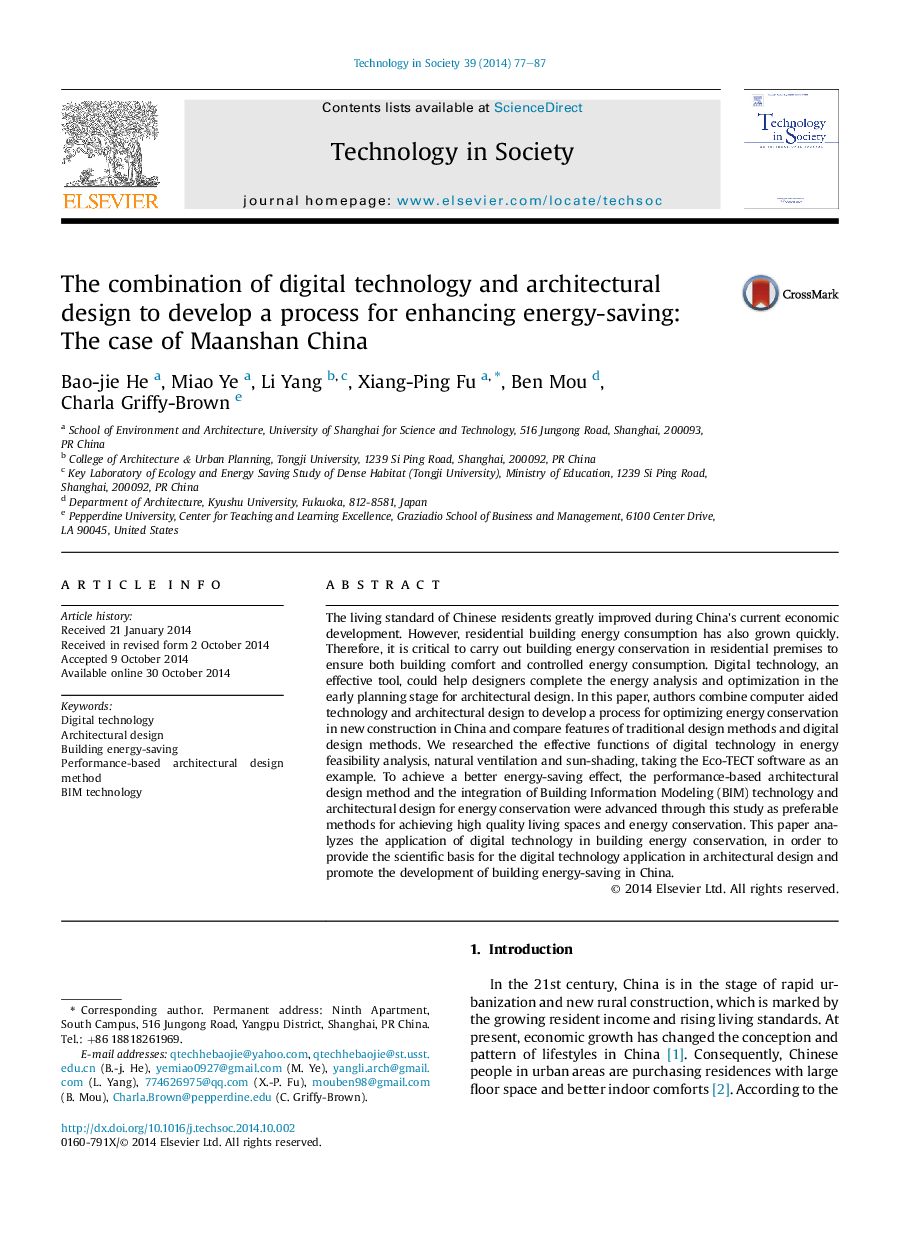| Article ID | Journal | Published Year | Pages | File Type |
|---|---|---|---|---|
| 375181 | Technology in Society | 2014 | 11 Pages |
•Digital technology and architectural design for building energy conservation.•Comparison of traditional design method and digital method.•Application of Eco-TECT in building energy-saving.•Performance-based architectural design method.•Integration of BIM technology and architectural design.
The living standard of Chinese residents greatly improved during China's current economic development. However, residential building energy consumption has also grown quickly. Therefore, it is critical to carry out building energy conservation in residential premises to ensure both building comfort and controlled energy consumption. Digital technology, an effective tool, could help designers complete the energy analysis and optimization in the early planning stage for architectural design. In this paper, authors combine computer aided technology and architectural design to develop a process for optimizing energy conservation in new construction in China and compare features of traditional design methods and digital design methods. We researched the effective functions of digital technology in energy feasibility analysis, natural ventilation and sun-shading, taking the Eco-TECT software as an example. To achieve a better energy-saving effect, the performance-based architectural design method and the integration of Building Information Modeling (BIM) technology and architectural design for energy conservation were advanced through this study as preferable methods for achieving high quality living spaces and energy conservation. This paper analyzes the application of digital technology in building energy conservation, in order to provide the scientific basis for the digital technology application in architectural design and promote the development of building energy-saving in China.
